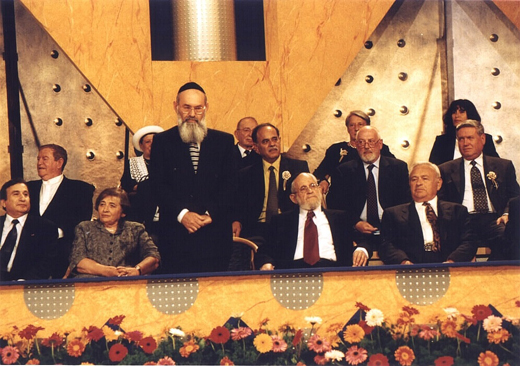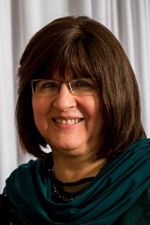
By Toby Klein Greenwald

EFRAT, Israel — The recent marking of 80 years from Kristallnacht, and the approaching 10th of the Hebrew month of Tevet, which the Israeli chief rabbinate designated as the day of Kaddish for those who perished in the Holocaust, brings to mind a ground-breaking project that grew out of the ashes of the Shoah.
In 1942 Rav Meir Bar Ilan, who lived in Israel, got word of what was happening to the Jews of Europe. In addition to the horror of their annihilation, there was a fear that not only would the Jews be destroyed, but so would their Torah, everything they had studied and preserved throughout the centuries. It was particularly very disturbing since the Torah centers were located in Europe.
Therefore, he decided to organize the vast Talmudic and post-Talmdic literature as an encyclopedia so the essence would remain. He asked Rav Shlomo Yosef Zevin to join him and they came up with a plan. Clearly it would have value beyond being a memorial, and eventually the connection with the Shoah would be not just intellectual, but historical, but at that moment it was urgent, and that is how it began.
Rabbi Zevin commenced the collection of information and concepts for 2,500 encyclopedic Talmudic entries, which serve the editorial board to these days, and they edited them into summaries. The work included the entire written Torah and the oral Torah– Mishna, Gemarra, Rishonim, Aharonim, and Shutim (halachic questions and answers) throughout the ages, and including all the gedolei Yisrael — the great scholars of the Jewish people — from eastern Europe through to North Africa. Their feeling was that perhaps the Nazis could destroy the bodies of the Jews but not the Torah and the soul, and preserving this Torah and these values was their contribution to ensuring the continued existence of Am Yisrael, of the Jewish people, in spite of the attempts to destroy it by the Nazis and their collaborators.
Since 2006 the project is directed by Professor Rabbi Avraham Steinberg, who has his own connection to the Shoah. His parents were refugees who fled from Galicia to Siberia and from there to Uzbekistan. He shared his own story with us.
“My parents were both in Siberia during the war, but they didn’t know each other then. Later they both ended up in Uzbekistan and there was a school for the Jewish refugee children. That’s where they met and married, and after the war they went to Poland, hoping they’d find family and their homes, but they found no one. In 1946 there was a pogrom in Kielce and my parents said if after all that had happened during the Shoah, the Polish people could perpetrate a pogrom, they can’t stay there, so they went to Germany and were in a DP camp, near Hof, in Bavaria, in what was then the zone of Germany under the American administration.
“One of my mother’s relatives was living in the city of Hof. She had fled there after the war, not to Poland, and in Hof she met a local German Jewish man and they got married. Every day she would go to the DP camp to see if she knew anyone and one day she met my mother. They developed a new bond and she arranged for them to move to the city. My father became the Rav of Hof and I personally was born in the city of Hof. He was there three years. Of course, there was no synagogue, so he built one, and created frameworks for shechita (ritual slaughter) and kashrut. In 1949 we came to Israel, by boat, via Marseille.
“I had used the Encyclopedia Talmudit before I became personally involved in it, because I greatly appreciated it. I even spent a seder (learning session) studying according to the entries in the Talmudic Encyclopedia, and when I wrote my works on halacha and medicine, I referred to it many times, as it’s an excellent and credible source.”
In addition to heading this project, Professor Steinberg’s groundbreaking work is the 7-volume Encyclopedia Hilchatit Refuit (in Hebrew) for which he received the Israel Prize in 1999. Recently he published a new 6-volume set Ha’Refuah Ka’Halacha. He has served as an adviser on medical ethics issues to the Knesset and to the Chief Rabbinate of Israel. He also has been involved in halakhic aspects of modern medical issues with the most prominent Rabbinic authorities, particularly with Rabbi S.Z. Auerbach zt”l, Rabbi Y.S. Eliashiv zt”l and Rabbi E.Y. Waldenberg zt”l.
Professor Steinberg continued: “When Rav Yehoshua Hutner, who was the first director of the Encyclopedia, and who maintained that position for many years, was elderly, they looked for someone who could continue the work. As I had written the encyclopedia on halacha and medicine, they thought I could help expedite the process that had been in the works for 60 years, and bring it to completion.
“It was a dilemma for me because I do many other things, but out of a sense of gratitude, and in order to move it toward completion, I agreed to take on the mission. I changed the work methods, received a significant donation, and hope that we will be able to complete this project.
“Just a few weeks ago we published volume 41, the last entry of which is “Motzi Shem Ra” [About the laws concerning giving someone a bad name – TKG] but we’ve also written many entries beyond that and we’re ready to do it as a “Wikiyeshiva,” even if it’s not yet printed. This will enable us to publish the material at a faster pace.”
Professor Steinberg: “Our goal is to complete the entire work by 2024 – in five and a half years. We employ 35 rabbanim who write, edit and review, and there are five senior rabbanim who have been writing at the Talmudic Encyclopedia for 15 years and more. Under the supervision of each of them there are four to six younger rabbanim, each writing an entry. Rav Meir Shmuelevitz, son of Rav Chaim Shmuelevitz zt”l, the rosh yeshiva of Mir, is heading the editorial board. The current editor-in-chief is Rabbi Zalman Nehemiah Goldberg.”
Every entry undergoes language editing and this is done, Professor Steinberg explained, by someone who is considered an outsider, an “average user,”’ because someone who is deeply involved in the work may assume something is understood, whereas an ordinary person who isn’t familiar with the material can point out when a sentence is unclear and has to be rephrased.” In this way, all the entries go through extensive critique”.
It is meaningful that Professor Steinberg, as the son of Holocaust survivors, stands today at the head of this massive project, whose goal is to preserve the Torah, including some knowledge that was rescued from the ashes of the Shoah.
The Encyclopedia Talmudit is published by the Torah literature publishing group Yad HaRav Herzog, named after Rabbi Yitzhak HaLevi Herzog zt”l, in Jerusalem.
*
Greenwald is a journalist, playwright, poet, teacher, and the artistic director of a number of theater companies. She is the recent recipient of the Lifetime Achievement award from Atara-The Association for Torah and the Arts for her “dedication and contributions in creative education, journalism, theatre and the performing arts worldwide.”